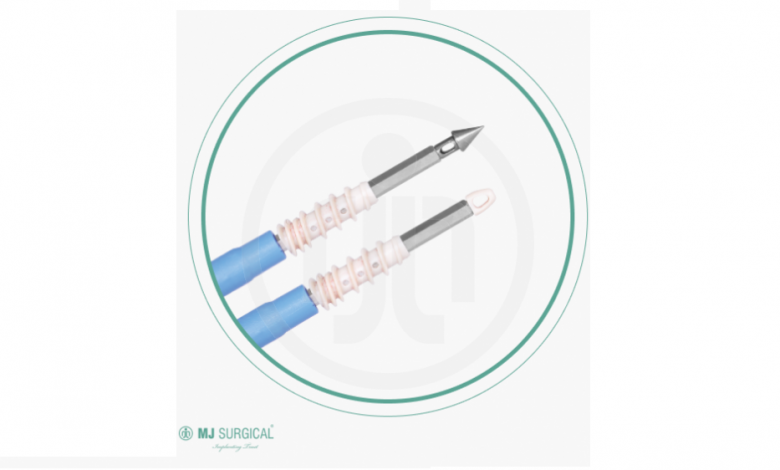Know These Facts About Knotless Suture Anchor

Surgeons face many challenges while dealing with Arthroscopic reconstructive surgeries. One of those main challenges is tying the arthroscopic knots. It requires a lot of practice and skills to achieve reliable, reproducible knots. Some of the surgeons opt to use knotless devices for many reasons. A Knotless Suture Anchor is a device that has the advantage of avoiding problems that arise as a part of surgery and it would help reduce the surgical time as well. Knotless suture anchors showed increased suture strength according to mechanical testing when compared with standard suture anchors.
Suture Anchors
The partial or complete detachment of tendons, ligaments, or other soft tissues from their associated bones is one of the most common injuries among athletes. These injuries mainly occur due to excessive stresses place on the soft tissues. Surgery might be required in most cases if the detachment of soft tissues is severe. There are plenty of fixation devices available in the market to reattach the soft tissues to their associated bones. Staples, screws, suture anchors, and tacks are some of the devices that are commonly used by surgeons.
Suture anchor fixation is known to be the most vital innovation in arthroscopic surgeries. It’s been three decades since the first original suture anchor was reported to be developed. They are widely used in surgical repairs as it helps in the fixation of soft tissues to bones effectively. The potential benefit of using this device for surgeries includes decreased bone damage. Suture anchors are available in various sizes, designs, types, configurations, and materials. Bio-absorbable and non-bio-absorbable sutures are the two main types of suture anchors.
1. Bio-absorbable Sutures
Bio-absorbable suture anchors are generally use for surgeries that are performed in the inner tissues of the body. Usually, it takes ten days to four weeks for the suture to break down in the tissue. The use of bio-absorbable suture anchors is suitable when the wound would heal quickly and a foreign material would not be necessary to leave inside the body. Surgeons prefer these suture anchors since they have the lowest possibility of causing postoperative complications. Various sports medicine procedures rely on it nowadays. The sutures are either artificial polymers or animal products that are specially manufacture.
2. Non-absorbable Sutures
Non-absorbable sutures are not metabolized by the body and hence just a few cases use this suture. This type of suture is more appropriate in cases where the heart and blood vessels need a lot of time to heal. However, they are highly recommended for shoulder surgeries. They are great in providing prolonged tensile strength to the tissues. This suture doesn’t get dissolved in the body as they resist the body’s chemicals and enzymes. These include polypropylene, polyester, nylon, stainless steel sutures, pvdf, etc.
Knot & Knotless Suture Anchor
A well-tied knot is reliable and extremely strong. Knots are tied in such a way that is strong enough to withstand bone forces and tendon. Arthroscopic knots are much similar to those used by climbers and sailors, and hence the security of knots is not a concern in the expert’s hands. They are extremely versatile and can be used in any arthroscopic surgery. Some of the major disadvantages of

knots are potential postoperative joint clicking from large knots, theoretical risk of tissue irritation, and the knot tying skills of surgeons. A surgeon should train himself to tie knots on models before doing so on patients.
Well, a knotless suture anchor is very advantageous as it avoids all the above mentioned problems and potentially reduces the surgical time as well. An anchor ends with a suture loop that adjusts the length of the suture. Following passage through soft tissue, the loop of suture is caught in a channel at the tip of the anchor. During the appropriate depth of the anchor insertion into the bone, the surgeons tension the ligament or soft tissues.
Also Read - Oxycodone 10 mg tablet- Its benefits and side effects
Design Of Knotless Suture Anchor
The appearance of a knotless suture anchor is just similar to the Gll anchor. It generally consists of a Ti body with two nitinol arcs. The memory property of the arcs creates resistance to anchor pullout after the insertion of the anchor into the bones. Although the appearance of the knotless suture anchor looks similar to the Gll anchor, it differs in several ways structurally.
Last Few Lines
A Knotless Suture Anchor is a surgical device that provides reliable and reproducible tendon to bone fixation in arthroscopic rotator cuff repair surgeries. If you are looking for the best place to order this surgical device, then you have arrived at the place. We at MJ surgical offer the most innovative and cost-effective orthopedic devices for our customers.





